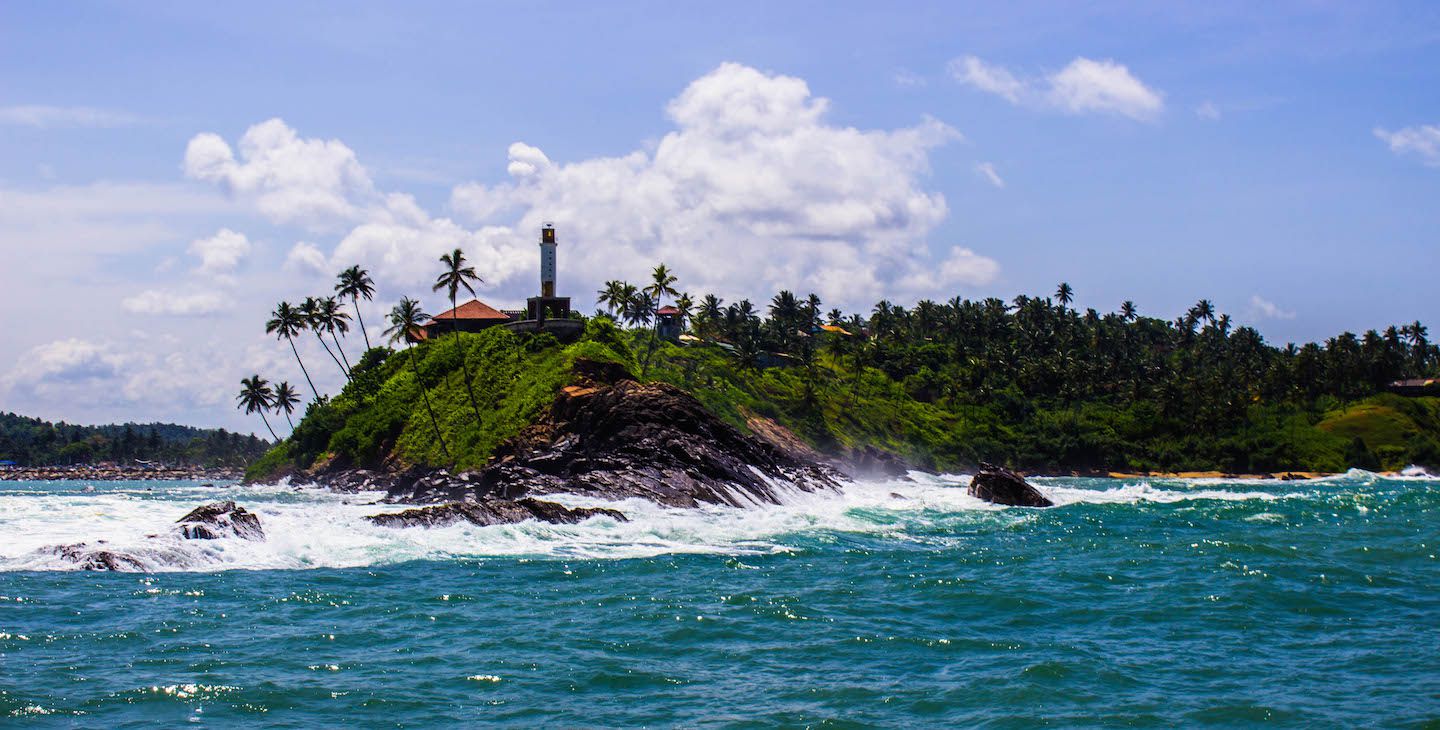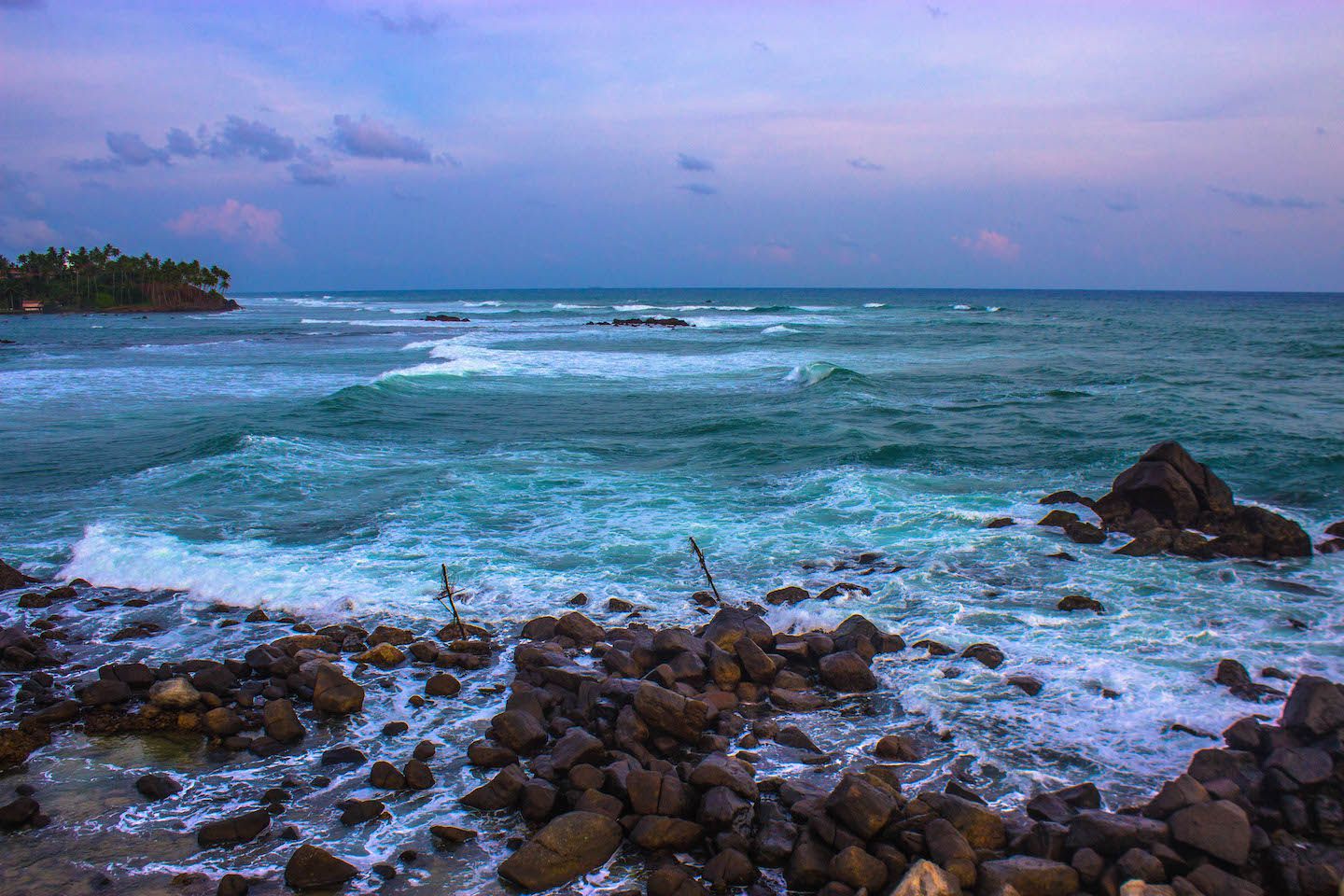After our Yala National Park safari for spotting leopards, we decided to go for a similar experience, but this time in the water. Famous for its timeless beach, Mirissa is a coastal city in the southern extremity of Sri Lanka and one of the best spots in the country to watch dolphins and whales. Even though the best season runs from November to April, whales sighting were still guaranteed during our visit in May, which was pretty exciting.

Whale-watching
With an early start, we headed for the fishing port of Mirissa, where the boat departed from. The ride to the first stop (for dolphins) took about an hour and was one of the rockiest I’ve ever been on. The boat swayed up and down like a mere puppet in the mighty Indian Ocean’s hands. Many of the tourists took sea sickness tablets before departure, but that didn’t seem to do much. I’ve never seen so many people throw up at the same time. The staff were frantically trying to provide enough plastic bags in time.

When the first dolphins were spotted, however, people seemed to hold it together at least long enough to appreciate the pods jumping in the distance. There were many of them, perhaps dozens. They all seemed to be putting on a synchronized swimming show. The pictures don’t nearly do justice to what we saw in person.

After a few minutes gazing at these graceful mammals, we moved on to the main attraction – the whales! It didn’t take long until one of the guides on the boat spotted one. For the rest of us, the only visible sign was the impressive water jet being shot into the air.

As we approached, a big dark blue hump could be seen emerging from the water like a submarine. It was a giant blue whale, the largest of all of the living animals and the heaviest to have ever lived, weighing 190 tonnes.

As everybody wowed in admiration, the huge mammal exposed the tail of its 30m long body and descended for a feast (blue whales can eat more than 40 million krills per day!). Being mammals, whales can’t breathe underwater and usually surface every 20min or so to take new air in (they can hold their breaths for up to 90min though). Knowing that, we patiently waited for the whale to come back up.

Just in time, the huge whale gently rose back to the surface for the delight of the tourists. My hope was that it jumped out of the water, just like the dolphins, leaving a huge splash behind. Unfortunately, that didn’t happen. Even I knew that was too much to wish for.

We watched the whole process a second time and headed back to the shore after the third. It was a nice experience to be so close to these giants and see them in their natural habitat.
Mirissa Beach
Besides whale-watching, the other main reason for visiting Mirissa was its beach. What it lacked in length, it made up for in beauty. The small white sand strip was flanked on one side by the tall side-growing palm trees and on the other by the deep blue turbulent waters of the Indian Ocean. Golden sun rays reflected on the water and completed the scenery.

On the eastern side of the beach, a small sand bank extended the beach, forming a shallow sandy path that led to a rock pinnacle. From the top, panoramic views of Mirissa beach and the smaller adjacent beaches were breathtaking. We sat atop the rock pinnacle for a long time, breathing in the ocean breeze, feeling more at peace than we had in a long time.

In the distance, the ocean seemed like an endless blue sheet waving in a hypnotic rhythm. Closer to the shore, its waves curled into a perfect arch before unleashing their full power against the rocky pinnacle. Not even the small bay area protected the beach from the powerful waves.

Mirissa was a quietly delightful surprise, with both the whale-watching experience and its beach exceeding our expectations. We could have stayed there for at least another week.
For more pictures from Mirissa, please visit the gallery!

